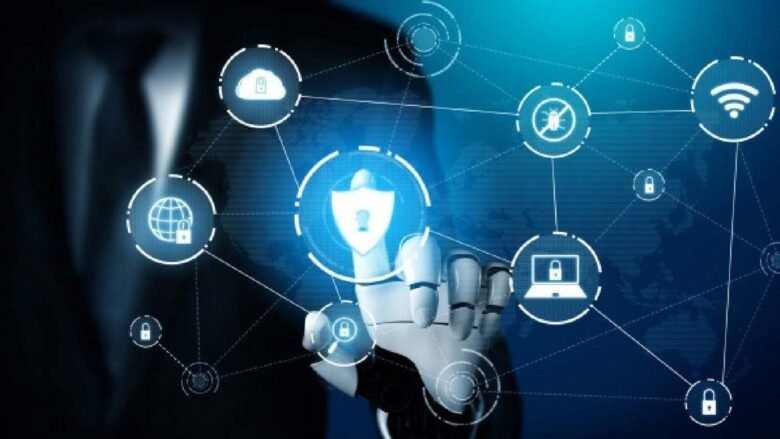Everyday tech, including phones, the internet, and household gadgets, plays an intricate role in our lives. By understanding how various technologies simplify everyday tasks for us, we can better appreciate their power. Software can automate tedious administrative tasks like filing invoices or tracking expenses, freeing human resources staff to focus on more fulfilling projects.
1. Smart Home Devices
No need for technology specialists here—anyone can utilize digital tools that make life simpler, healthier, and more efficient at little or no cost. From smart assistants that help manage tasks to apps that help us set and reach fitness goals, everyday technology supports our lives in ways we may never realize.
Smart homes utilize connected devices, such as light bulbs, outlet plugs, appliances, refrigerators, and cameras, for remote monitoring and control. All the connected devices connect to a hub device, which connects them all together so they can communicate via app or voice assistant such as Alexa.
2. Apps for Meal Planning
Meal planning apps offer a structured approach to healthy eating and can reduce stress, food waste, and time spent in the kitchen. Apps that encourage experimentation with new recipes as well as themes (such as Meatless Monday or Taco Tuesday) make maintaining your meal plan simpler.
Participants described the acceptability of food provision apps under two main themes—behavioral performance and effort. Behavioral performance concerned how the apps supported food provision behaviors by contributing towards them, including features that supported habit formation; effort related to their ease of use—whether they were used during behavior or when-time—as well as functionality considerations.
3. Fitness Trackers
Fitness trackers can be powerful tools in helping people to become more active, especially when integrated with daily habits that promote healthy lifestyles. Setting goals, creating reminders, and associating tracker use with regular cues such as wearing and checking it at the same time each day are all effective approaches to increasing physical activity levels.
Fitness trackers use sensors to collect data; the MAC layer organizes it, and the network layer transmits and stores it, while the processing and storage layer transforms numerical parameters into meaningful health assessments, with the service layer providing an intuitive user interface, offering challenge groups, and sharing results and routes between users.
4. Robot Vacuums
Robot vacuum cleaners are battery-powered appliances designed to clean a room automatically with their disc-shaped design, using mapping and navigation technologies as sensors to identify obstacles in a room and work systematically through it. Smart devices allow users to set schedules and customize cleaning. Incorporating features like quiet mode, pet detection, and mopping capabilities, these devices enable a personalized cleaning experience.
As these appliances require less physical strain, they can help alleviate some of the challenges presented by daily chores for those living with disabilities or older individuals. For instance, robotic vacuums can effectively eliminate dust and allergens in the air—something that greatly enhances quality of life for allergy sufferers.
5. AI
Artificial intelligence (AI) is revolutionizing our world in more ways than any technology ever has before. While AI won’t replace humans entirely, it will allow them to perform their work more effectively and with greater creativity.
Automation allows people to reclaim time by automating tedious tasks and providing more insight based on data. Examples include creating personalized recommendations from e-commerce sites, anticipating equipment maintenance needs, and speeding customer support responses.
Business leaders face many AI operational headwinds, such as cost uncertainty, recruiting talent with specific skill sets, meeting demand for new products and services, and maintaining employee trust. Leaders can foster a human-first culture by adopting transparency measures such as creating forums where employees can discuss the latest technological innovations.
6. Financial Management
Financial management refers to the practice of overseeing all money that flows in and out of an enterprise, from creating budgets and projecting revenue forecasts to determining capital structures and forecasting future cash needs.
One of the key aspects of financial management is ensuring a company has enough money for daily expenses like employee pay and raw material purchases. To achieve this, historical and current financial data analysis are employed to set targets, modify goals, and develop forecasts. Digital tools can streamline financial management by automating tasks and enabling teams to collaborate remotely, freeing people up from administrative work so they can focus on creative or complex processes that help a company flourish.
7. Communication
Technology plays an indispensable role in managing everyday tasks and meeting personal and professional objectives, whether at home or on your commute to the office. Staying abreast of emerging technologies—be they smartphones, household gadgets, or financial management software tools—is crucial to increasing efficiency.
Communication apps enable teams and clients to work remotely together from any location, while voice-controlled assistants like Alexa, Siri, and Google Assistant act as personal helpers, allowing you to set reminders, schedule meetings, control smart home devices, and play music hands-free.
8. Smart Home Automation
Individuals using smart devices can automate many daily tasks to free up both time and energy spent on repetitive chores while decreasing stress levels and improving efficiency. Smart home devices connected through a hub or app allow homeowners to create an automated system they can access from any device or location, including lights, thermostats, and security cameras.
Accessing your home from anywhere can bring wonderful peace of mind, relieving both stress and worry. Thanks to smart technology, you can unlock the front door for a neighbor, view surveillance footage remotely, or preheat your oven from any mobile phone—this level of control can be invaluable for many families.




